| In
1841, the British colonial government began developing
Hong Kong
as an entrepot from the site of present day Sheung Wan, to present day
Central. The ˇ§Seed to
Cityˇ¨ morning tour led by Mr. Roger Ho of
the Conservancy Association Centre for Heritage was
designed to trace Hong Kongˇ¦s early development, as well as the
earliest Chinese community within the
new city
. A broad cross section of
architect members, associate members, guests and members from fellow
institutes attended, reflecting the wide appeal of ˇ§Heritage Mayˇ¨
events. |
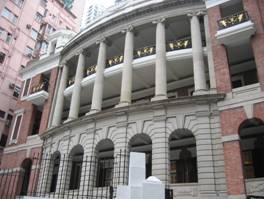 |
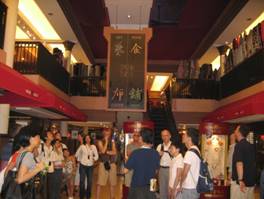 |
|
The
group started at Western Market in Sheung Wan.
The structure, built in 1906 is a significant monument that was renovated and transformed from a food
market to a shopping arcade in 1990.
The guest speakers, Mr. Lam Sair
Lung
of the ASD and Mr. Ivan Ho pointed out many of its architectural
features, such as the polychrome brick masonry, the steel ceiling
structure, and the lofty central space and discussed the difficulties
and merits of the renovation and adaptive re-use.
|
|
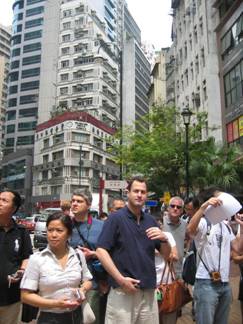
|
The second stop was the site of the first
harbour reclamation at Bonham Strand, which occurred in 1850, far from
the current harbourfront and now firmly imbedded within the Sheung Wan
urban fabric. A pass by
Possession Point of historic significance, now part of
Hollywood
Road
Park
, lends perspective as to where the British landed in 1841, an original
waterfront site, and how the city grew from there.
The
tour also included a visit to the
Tung
Wah
Hospital
area, and the Kwong Fuk Ancestral Hall in particular.
Mr. Roger Ho and his colleagues explained the importance of these
institutions in the early years of the colony, and demonstrated the vast
importance of the temple to assist a transient urban population that
wanted to return ˇ§homeˇ¨ to their villages after death.
Though a small temple, one could still sense the cultural
significance of former practice and its importance even today in the
community, in relation to its traditional character and architectural
form. However, many of the
tour sites are today so divorced from their original functions or
geographic significance, and it seems their importance is either
marginalized or disregarded by new
development
context. |
|
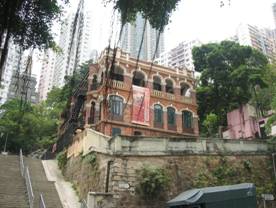 |
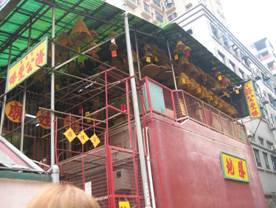 |
| After
stops at the architecturally distinctive
Medical
History
Museum
(formerly the Patholgy Institute), and the
Sun
Yat
Sen
Museum
(formerly the Ho Tung family home, then the Mormon Church), the recently
renovated Kam Tong Hall, the group wound down the hill through the
Peel Street
market area.
Mr.
Roger Ho gave an impassioned account of the building types, namely shop
houses and temples, as well as the significance of street markets in the
life of local people and the community in giving the area a distinct and
vibrant traditional street character.
While few truly old buildings remain, eg., the Wing Woo Grocery
Store, the building types and the street market have continuously
thrived in this location for over a hundred years.
This stop provided excellent background to any participants in
the Peel and
Graham Street
Charette as part of the Urban Design Weekend Symposium that followed. |
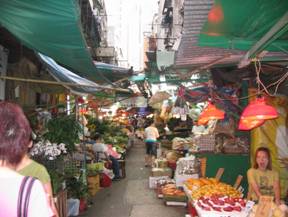 |
| After
winding through market streets, the tour proceeded to the last stop via
the Central-Mid Levels Escalator to the Central Market, an unusual
architectural monument, in that it is a modernist, streamlined style
seldom seen in
Hong Kong
. This rather exhaustive tour ended on an interesting note highlighting
the importance of sensitive urban design, so as to value the
significance of traditional and cultural heritage in regenerating the
city. |





